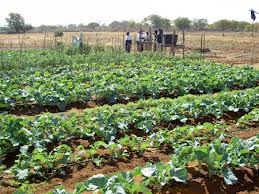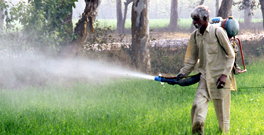First food: business of taste
Good Food is First Food. It is not junk food. It is the food that connects nature and nutrition with livelihoods. This food is good for our health; it comes from the rich biodiversity of our regions; it
Good Food is First Food. It is not junk food. It is the food that connects nature and nutrition with livelihoods. This food is good for our health; it comes from the rich biodiversity of our regions; it
Recognizing that the plethora of dams built and planned in the Ganga basin could almost empty the river of its waters in the winter season, an inter-ministerial group has recommended that the projects

This is an analysis of the current status of wastewater generation, its uses and livelihood benefits especially in agriculture, based on national data and case studies from Ahmedabad, New Delhi, Hyderabad, Kanpur and Kolkata.
Since glass traps heat, buildings require more air conditioning. As a result, energy use goes up Building green is definitely important. But it is equally important to know how green a green building is. Take the glitzy, glass-enveloped buildings popping up across the country. It does not matter if you are in the mild but wet and windy climate of Bangalore or in the extreme hot and dry climate of Gurgaon - glass is the in thing.
New Delhi: In 2009, clearance for digging a borewell in Delhi could only be issued by Delhi Jal Board. Only those proposals meant for community use would be considered. The step was taken to curb plummeting

Read the response of Centre for Science & Environment (CSE) to pesticide industry advertisement published in the guise of public interest appeal in a major national daily. CSE claims that Centre for Environment & Agrochemicals has made several scurrilous and baseless statements against it.
The Centre for Science and Environment (CSE) is launching a new course — capacity for change — which will be conducted from April 15 to 20. This is a programme offered by the Anil Agarwal Green College,
Current policies on containing air pollution, particularly in cities, are regressive Our health is not on anybody's agenda. Or we just don't seem to make the connections between the growing burden of disease and the deteriorating condition of our environment. We don't really believe science, which tells us each passing day how toxins affect our bodies, leading to high rates of both morbidity and mortality. It is true that it is difficult to establish cause and effect; but we know more than enough to say that air pollution is today a leading cause of both disease and death in India and other parts of South Asia.
The challenge will only become stiffer as projected sewage generation by 2021 is likely to be about 4,500 mld. This means sewage treatment capacity will have to be augmented by 2,000 mld in less than 10
The members of Rajya Sabha expressed their concern on the increasing pollution in various rivers across the country, particularly Ganga and Yamuna. Read text of this debate.
Eighty percent of sewage in India is untreated and flows directly into the nation’s rivers, polluting the main sources of drinking water, a study by an environmental watchdog showed. Indian cities produce